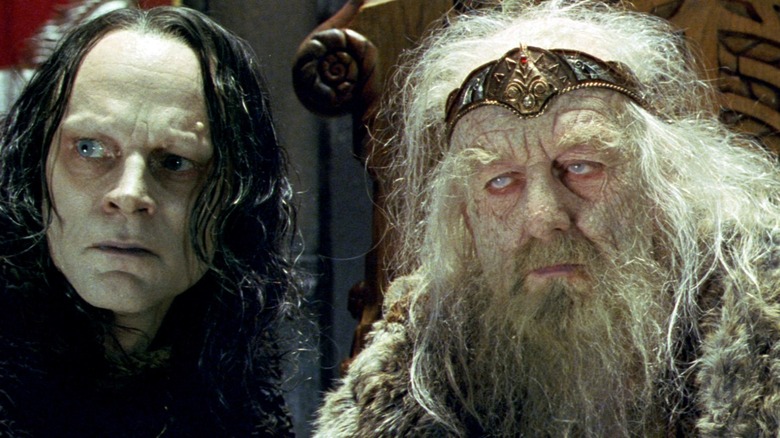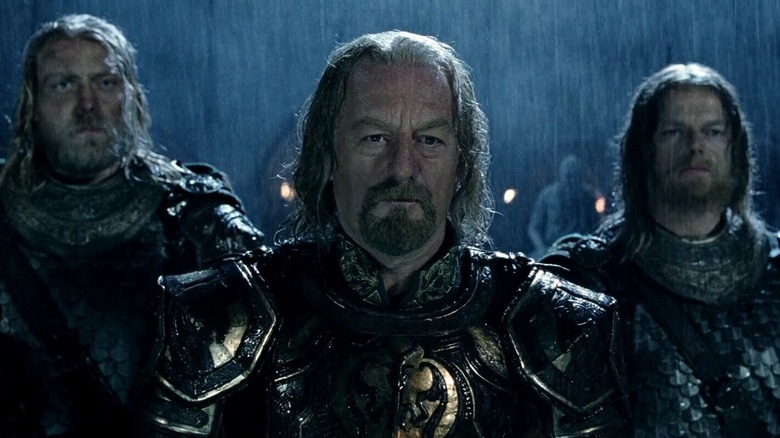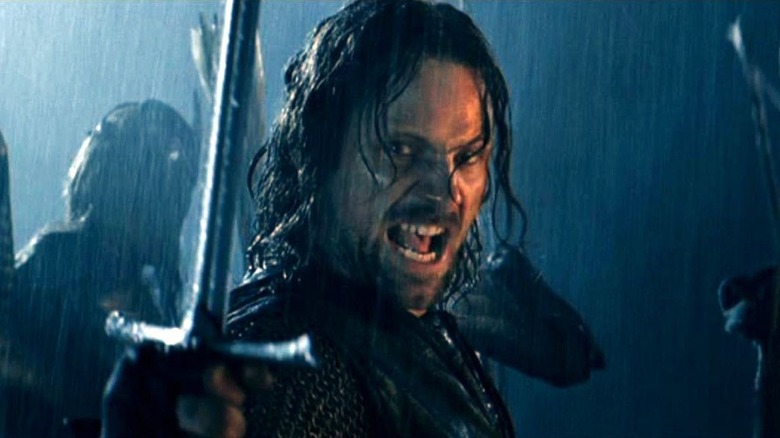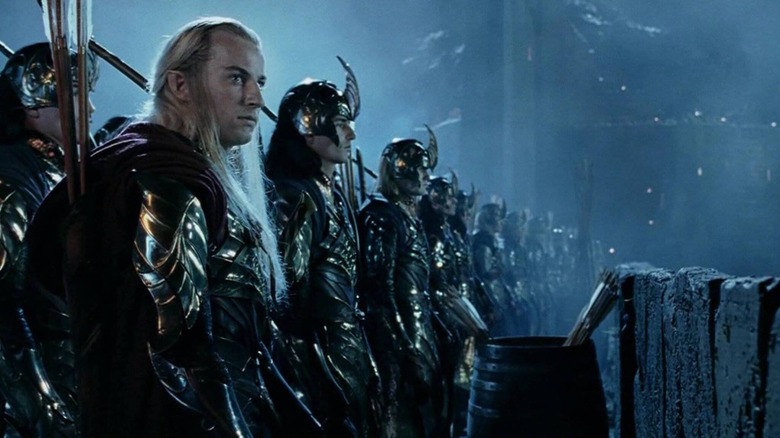It's Hard To Argue With Peter Jackson's Pick For The Best Scene In The Lord Of The Rings
Two decades after its release, "The Lord of the Rings" trilogy remains a monumental achievement. Like "Star Wars," or "Jurassic Park" before it, Peter Jackson's trilogy adaptation of J.R.R. Tolkien's legendary book was a blend of old-school cinematic techniques and new technological wizardry. The films used on-camera tricks like forced perspective and miniatures, but also state-of-the-art VFX and motion-capture technology in order to bring Middle-earth to life.
This is especially true of the fight scenes in the trilogy, which share a sense of scope with the epic movies of old like "Ben-Hur" or "Cleopatra" while still feeling modern.
While we wait for Prime Video to bring us the most expensive TV show ever with "The Rings of Power," it's time to revisit the #1 trilly and the golden standard for fantasy movie trilogies and what makes it great. There is one scene in particular which, even 20 years later, stands out as an encapsulation of the cinematic wizardly and achievement that is "The Lord of the Rings," and it just so happens to be Peter Jackson's choice for the best scene in the trilogy.
'So it begins'
Indeed, speaking to Cape Cod Times, Peter Jackson called "The Two Towers" his favorite film, and particularly shouts out "the Battle of Helm's Deep sequence in that film" as its best scene, despite his arduous personal battle to get that scene made.
The first thing to note about The Battle of Helm's Deep, also known as The Battle of the Hornburg is how the battle itself has a three-arc structure like any great movie. There's a beginning, a middle, and end, sure, but also a thematic and narrative arc to the battle complete with the inciting incident of an accidental firing of the first shot starting the battle, to small losses and victories along the way — Aragorn tossing Gimli to a bridge and them killing a bunch of orcs, or the orcs blowing up a wall of the fortress — and a roaring climax where hope is all but lost before victory is finally achieved.
This is what makes the scene so special, as Jackson, Fran Walsh, Philippa Boyens, and Stephen Sinclair turn what is a fairly short and straightforward fight in the book into an emotionally resonant, visually stunning extended scene that takes up a rather large portion of the film. This is in part due to "The Two Towers" being the middle chapter in the trilogy, and not having a natural climax, so Helm's Deep is turned into that climax. We spent the first half of the movie seeing how Rohan was slowly corroded by the forces of Isengard, how its people were being hunted, its fields burned, so the Battle of Helm's Deep is them at their lowest point, the last sliver of hope for the kingdom, and its victory a turning point in the War of the Ring.
'Fell deeds awake. Now for wrath. Now for ruin. And the red dawn'
The Battle of Helm's Deep has also set a standard for big-scale battle scenes in cinema that hasn't been matched, though many productions have tried. It is a testament to the stunt team and to the late cinematographer Andrew Lesnie that the whole sequence is perfectly clear and understandable, well-lit and staged — unlike some other fantasy battles that take place during one long night. There is a rhythm to the whole scene that is never too fast-paced or too slow, the staging makes it easy to tell where everyone stands and to follow the action, and even though the scene takes place at night, the use of a simple color palette and backlighting makes it easy to see everything.
There's also the way Jackson manages to make the scene feel both grounded and rooted in reality, but also heightened as a fantasy tale. His love of war films and documentaries shows here, with the use of practical armor, weapons, and makeup as well as the use of smoke and rain to make the fight feel tactile. Yet the sight of the huge fortress, the look of the orc army, and, well, the presence of elves, make it clear this is not our reality. That balance is tricky to pull off, but this movie did and made it look easy.
'At dawn, look to the East'
Then there's the technological aspect of the scene, as Jackson and his team invented a software called Massive to portray the scale of an orc army 10,000 strong. Because the software relies on AI to treat each CGI character individually, Jackson once told Stephen Colbert that he didn't know how the battles would turn out because he didn't control what the armies would do. Indeed, some of the characters would even turn around and flee. "We had to dumb them down and tell them to stay fighting," Jackson told Colbert.
It's been 20 years since The Battle of Helm's Deep, and it's hard to think of a battle scene that comes close to its emotional or visual splendor.
"The Lord Of The Rings: The Two Towers" is streaming on HBO Max



